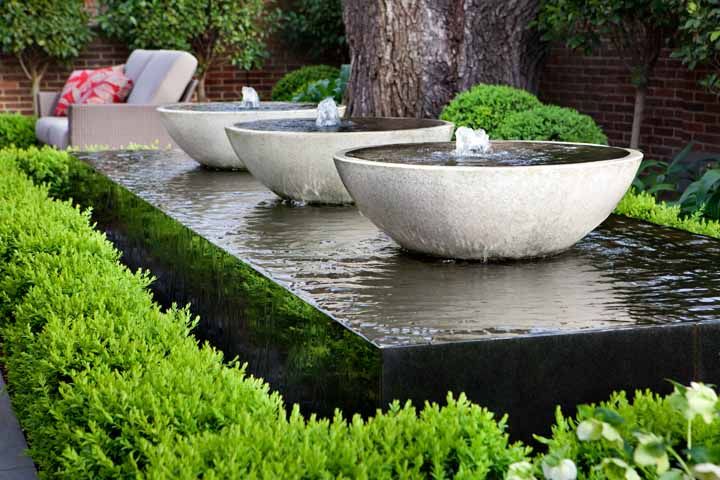Architecture and garden design are often synonymous with some type of water features which come in many guises ranging from: fountains, pools, ponds, cascades, waterfalls, and streams.
Early water features were not-surprisingly powered by gravity with some then supplied with water using hydraulic rams.
In an ever changing world with new and then even newer technology the majority of water features have been powered by pumps but most are now powered by electricity and perhaps even either by cell phone with “Facebook” / “Twitter” or other so-called “Applications” working them to one’s own mood requirements!
There is an increasing range of innovative designs as the market becomes more established and people become more aware of alternate installation methods, such as solar power. The advantages of using solar power including environmental benefits, no electrical lines in the garden / power outages or even just because “free energy” is wanted.
Modern water features are typically self-contained, meaning that they do not require water to be plumbed in; rather water is recycled from either a pond or a hidden reservoir, also known as a sump. The sump can either be contained within the water feature, or buried underground (in the case of an outdoor water feature).
A water feature may be indoor or outdoor and can be any size, from a desk top water fountain to a large indoor waterfall that covers an entire wall in a large commercial building, and can be made from any number of materials, including stone, granite, fibreglass, marbelite, tiled, stainless steel, resin or glass, to name but a few.
Most water features are electronically controlled, ranging from simple timer actuators to sophisticated computerised controls for synchronizing music to water and light animation.
Water features often offer additional benefits to homeowners, such as increased curb appeal, home value, reduced noise pollution (due to the sound of water overpowering outside noise), and improved air quality.
In early modern Europe, fountains were found in the elaborate gardens of the mansions of the wealthy, and in modern times can be an element in urban design provided by the municipal authorities or public subscription.
Water features not only provide peace and tranquillity but wildlife benefits also which make humans and wildlife interact with each other in a joyous and harmonious manner.
In today’s changing global climate providing diverse sun and rain weather patterns one’s garden can be further enhanced with an ambience and better pollination of flowers, educational diversity etc. resulting in a healthier and more beautiful “YOU” and your garden!


